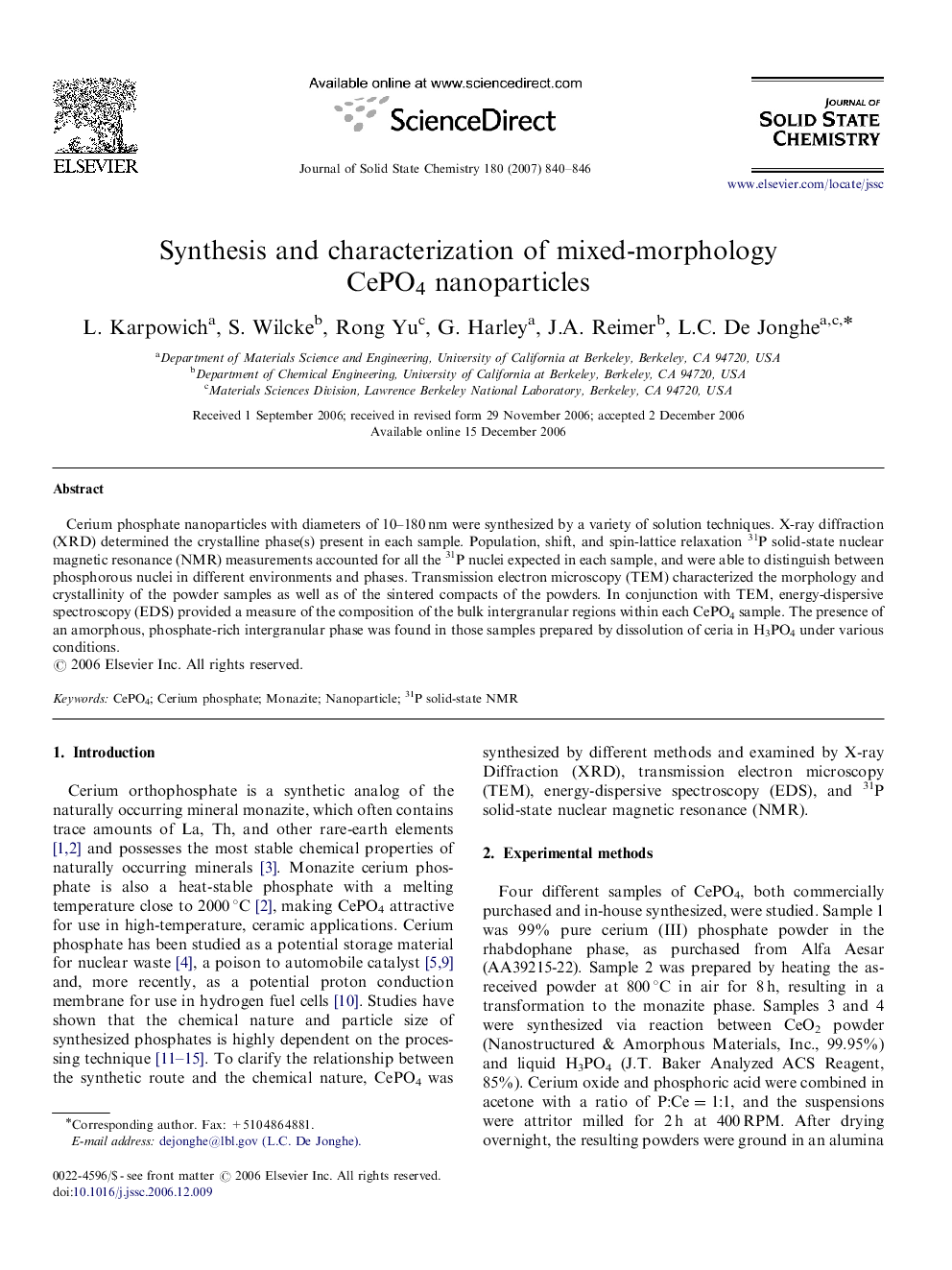| Article ID | Journal | Published Year | Pages | File Type |
|---|---|---|---|---|
| 1333850 | Journal of Solid State Chemistry | 2007 | 7 Pages |
Cerium phosphate nanoparticles with diameters of 10–180 nm were synthesized by a variety of solution techniques. X-ray diffraction (XRD) determined the crystalline phase(s) present in each sample. Population, shift, and spin-lattice relaxation 31P solid-state nuclear magnetic resonance (NMR) measurements accounted for all the 31P nuclei expected in each sample, and were able to distinguish between phosphorous nuclei in different environments and phases. Transmission electron microscopy (TEM) characterized the morphology and crystallinity of the powder samples as well as of the sintered compacts of the powders. In conjunction with TEM, energy-dispersive spectroscopy (EDS) provided a measure of the composition of the bulk intergranular regions within each CePO4 sample. The presence of an amorphous, phosphate-rich intergranular phase was found in those samples prepared by dissolution of ceria in H3PO4 under various conditions.
Graphical abstractHigh resolution electron microscopy image of amorphous intergranular phase (a) in polycrystalline monazite CePO4.Figure optionsDownload full-size imageDownload as PowerPoint slide
